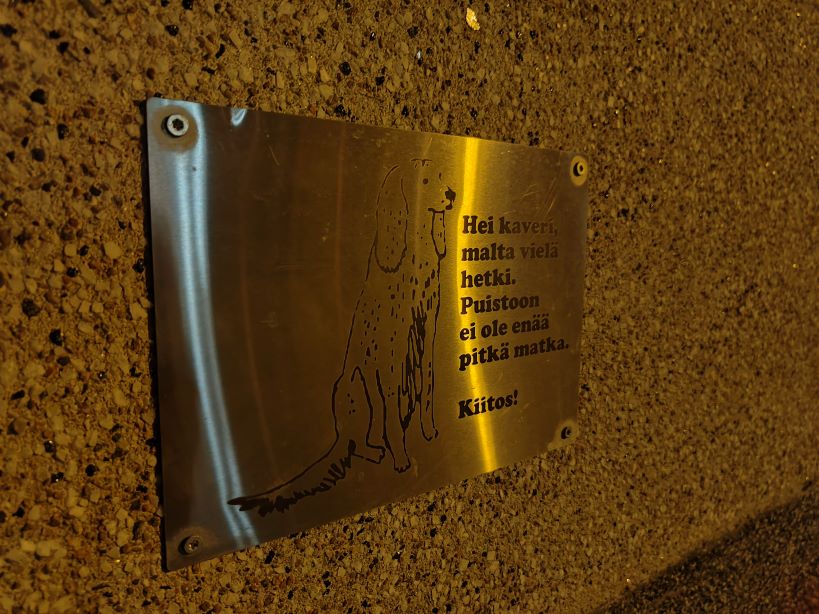
This dog-related sign is unusual both in its construction as a steel etching and in its contents. The steel plate, attached to a large stone wall, displays a somewhat realistic etching of a sitting dog, looking somewhat passively to the side. The text, etched next to the dog, freely translates as:
Hey buddy, hang on for just a while longer. It's not much longer to the park.
Thank you!
From the context it is clear that the general topic is that of dog urination, probably to discourage urination on this particular stone wall. And indeed, the park is just one block away. What fascinates me here is that
- the sign here addresses the dog and not the dog walker,
- the topic of urination or defecation is not directly mentioned at all, and
- the sign vessel took effort and is very locationally specific.
So it is sort of a curious mix of very subtle messaging. The viewer must understand from the image of the dog and the text that we are actually addressing dog excrements. Once the viewer (who has to speak Finnish to understand the message) gets the main meaning, they are then confronted with the very kind and playful approach of positively encouraging the dog to go on for a bit more. No direct orders are given, nothing is directly forbidden, but instead we just have the dog being encouraged to go on for a bit more.
With all that politeness and subtlety, the sign has also a very narrow focus. The sign only works in a Finnish-speaking area where a park is nearby. So this is very unlikely to be mass produced, but perhaps custom made for this particular piece of wall.
Finally I also want to note that, on the one hand, without the image of the dog the sign would not convey the same meaning - it might instead be an ad for the park or a local cafe or bar in there? On the other hand, without the textual part we would just have an image of a passively sitting dog. A non-Finnish speaking might infer from the existence of text next to the image that the sign is about dog excrements, but this is nevertheless a sign where the visual and textual components are unusually dependent on each other.